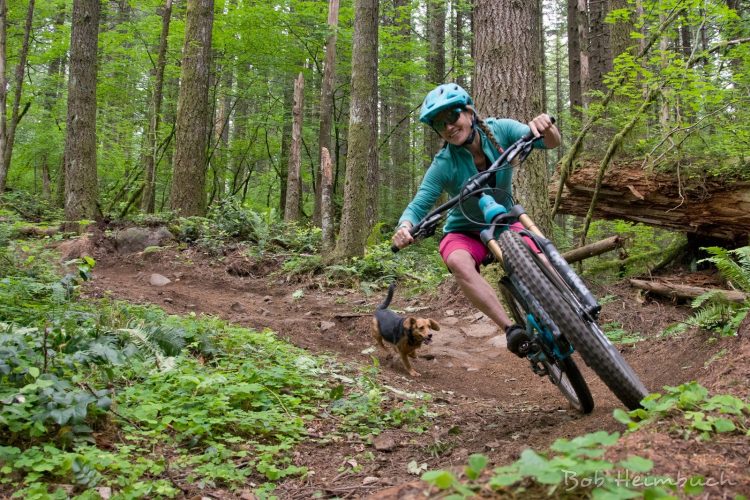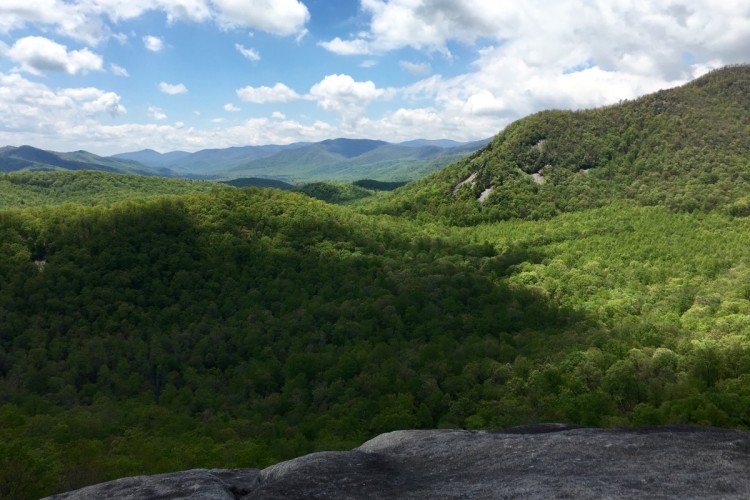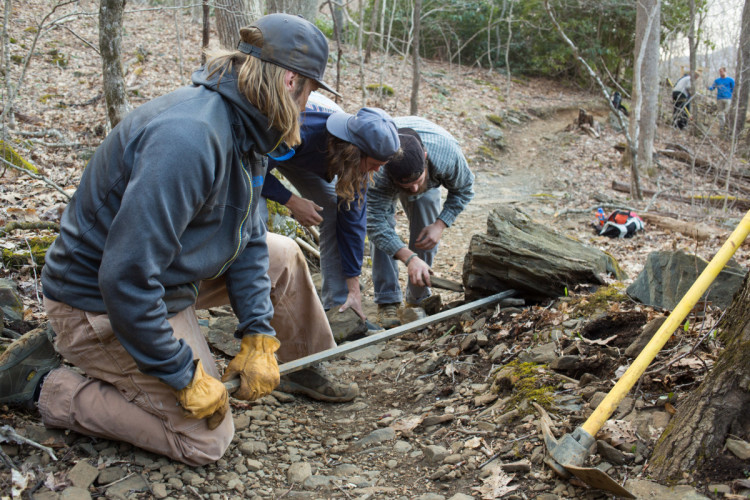
Before the Shovel: First Steps
As a trailbuilder with 4 years experience, I have worked on more than my fair share of mountain bike trails. I believe its every mountain bikers responsibility to get involved with trailbuilding at some level plus its great exercise, youll meet cool people, and youll be giving back to the mountain bike community. Best of all you, and your friends get to ride your new creation! Getting involved with trailbuilding is easy if you look in the right places. I intend to show you the quickest and easiest way to start building the trail of your dreams. This article identifies the steps you need to take before you put a shovel in the ground.
Identify a Need
Chances are you have trail envy. Youve seen or ridden trails far from home that you love, and you want to bring the best elements together into one super-trail close to home. Dont be afraid to dream big when you picture the ideal trail. Grab a pen and paper and list all the features youre looking for. Start with the genre of trail you want to build and then add more specifics. Heres an example:
New Downhill Trail
– Road to shuttle/ride/hike up
– At least 500ft elevation drop
– Flowy
– Rock gardens
– Lots of jumps: step down, step up and gap
– Some berms
– No uphill
– Some pedalling
– Some steep sections
– Within 30 miles of home
These are just some examples of characteristics you might want in a trail. I will expand on definitions in article 2 entitled Choosing Your Line.
Now that youve identified the key features of your trail, contact people in your community with extensive knowledge of existing trails.

Contact the Local Experts
In order to find an area to build trails, contact your local mountain bike club. If your town doesnt have a mountain bike club, go to the local bike shop and find out who knows the trails best. Once youve found your local expert, tell him about your riding interests and what your area is lacking. Say that you would like to get involved and build a trail to suit the needs of yourself and other riders like you. This is a good way to find out if there are already trails in your area that meet your needs and can help identify areas that are good for building.
Be open to helping the club meet their existing trailbuilding goals, especially if you are a novice trailbuilder. Often mountain bike associations will host trail build days. Attending these build sessions will help you maintain a good relationship with your local club, meet other people with similar interests, and learn basic trailbuilding skills. If youre unsure as to whether you are ready to build a whole new trail, sponsored trail build days will help you decide. Mountain bike associations appreciate suggestions for trail improvement. Maybe they will use one of your ideas in their next build day.

Once youve attended some build days and improved your trailbuilding skills, ask your local association to give you some projects pertaining to your interests. Many mountain bike associations have long lists of trail maintenance jobs that need to be done as well as volunteer hours to fulfill. For many people, involvement in local build days is all the trailbuilding they want to do. For others, trailbuilding turns into a passion matched only by their enthusiasm for riding. These impassioned builders need a trail to call their own.
The desire to build trails comes from an unfulfilled need. Your local expert might not show any interest in pointing out areas on existing trails suitable for the modifications you have in mind. It is common for mountain bike clubs to hesitate in allowing trail features such as jumps, berms and steep sections, features that many riders enjoy. A good solution to this problem is to ask to build a new trail specific to the needs of riders like you. Now you must find a suitable place to build your dream trail.
Identify a Suitable Area to Build
First, ask your local mountain bike association if they can recommend an area to build in that will suit your needs. If there are trails in your area similar to the one you have envisioned, ask if you could build in the same area. This keeps trails centralized and allows others to more easily enjoy your work. If you dont get an answer from one person, look for someone else who can help and be persistent. Ask your local mountain bike club, bike shop, riders and perhaps the best resource, other trailbuilders.

It is very important that you dont build a trail anywhere you dont have permission to. This includes private land and protected areas. Unless I have permission from the land manager, I only build on crown land. Crown land is a Canadian term meaning taxpayers land owned by the government. Crown land is public land with certain laws governing its use. Find out where the government owned land is in your area by going to library or geography department of a university and looking at zoning maps. You will likely find a number crown land areas suitable for your new trail. (note: US laws are often more strict regarding public land uses) It is always a good idea to contact the crown land manager in your area before building. Crownland.org is an excellent resource if you live in Canada. Google maps is another good tool to use to identify forested areas and topography using the satellite and terrain tools. Remember, illegal building hurts our sport and can lead to jail time!
Now that you have identified one or more areas suitable for your new trail, its time to brush up on your trailbuilding knowledge.
Review IMBA Trailbuilding Strategies
IMBA has a number of books packed with useful trailbuilding strategies. These books will help you envision your new trail. Its good to read this before you go scout out the area because you will have a better idea of what natural features to look for.
Now that you have one or more possible places for your new trail, its time to lace up the boots!
Stay tuned for my next article: Choosing Your Line.
About the Author
Kevin Johnstone is an avid mountain biker from Ontario, Canada. He has been building trails for 4 years across Canada. He has worked with the worlds #1 bike park builder, Jay Hoots, for a number a build sessions spanning 2 years. He spent 2 seasons improving the trails at Kelso conservation area in Milton. He is currently building downhill specific trails. Kevin can be reached via private message.



















